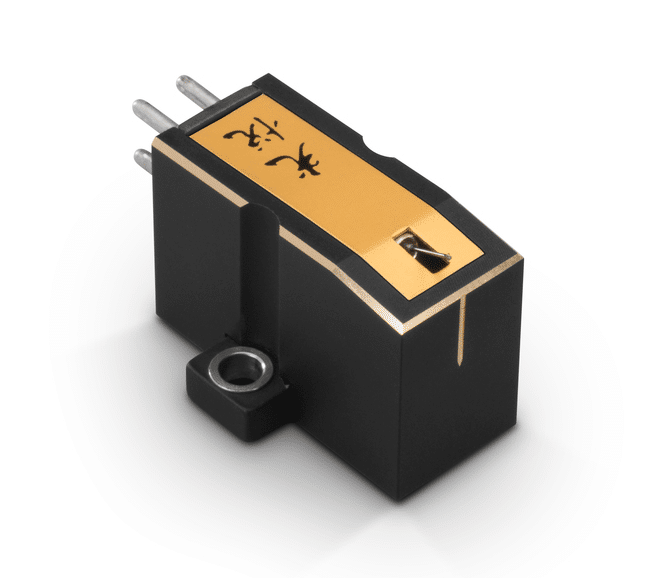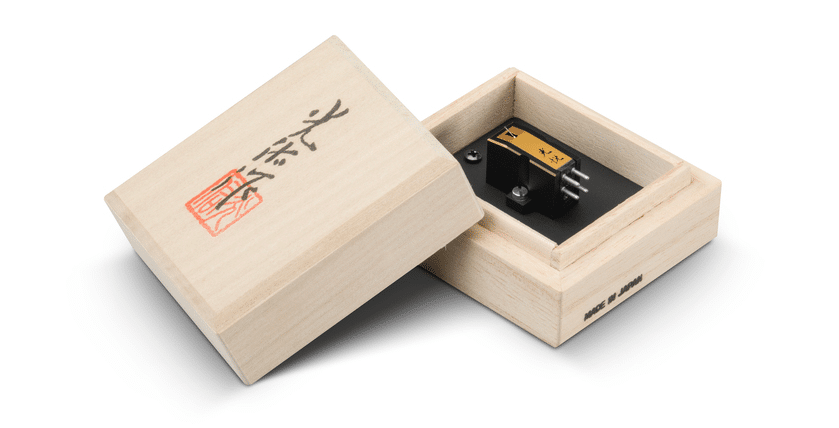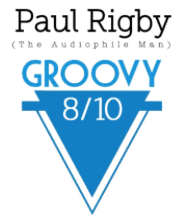The Article
Koetsu Black moving coil cartridge: Paint It Black
3rd December 2015

A super cartridge for the rest of us? Paul Rigby reviews the Koetsu Black
Koetsu cartridges are often the sort of things that most people read about but never buy because they can be very, very, expensive. Some Koetsus are even crafted from precious materials. In fact, I’m sure that there are audiophiles out there who buy these rather lovely, hand-made objects, place them on a small stand and gaze upon them from outside a glass cabinet, using them as a topic of conversation at refined dinner parties.
Many audiophiles believe that a Koetsu is the best branded cartridge in the world. They were, at least, the first hand-made cartridges to make a splash in the audio world.
The 10.8gm Black moving coil is the company’s ‘entry-level’ model and arrives as an oblong block of anodised aluminium with copper coil wiring, a Samarium Cobalt magnet and Boron cantilever.
Coming from world of the Benz Gullwing, it was no great surprise to see that the Black demands a downforce of 1.8-2gm. This low figure is light but offers the best results.
SOUND QUALITY
I started my listening tests with the 1974 album, Ella Fitzgerald’s Take It Easy and the the title track. This song is stripped of just about all production because the only instrument accompanying her is Joe Pass on a lazy, easy going acoustic guitar. Perfect for examining detail and, above all, silence.
This cartridge might be the cheapest Koetsu on the block but it’s still a relatively expensive unit and so needs to perform well in this crowded sector of the market.
The one thing I thought of when listening to this cartridge, even after around three seconds of play, was clarity. The Fitzgerald song is famous for featuring a veiling around the upper mid area for the majority of cartridges. Even at this early stage in the review, I can answer the question of why, if you own a mid-priced MC cartridge, would you even want to upgrade to the heady heights of a Black?
Let’s take my Benz Glider SL, priced at a relatively low cost £700, as a prime example for this point. On this Fitzgerald track, there is a thin veil or curtain over the upper mids that adds an unhealthy bloom to the upper mid frequencies. This is relative to the Koetsu, of course.
What the Koetsu Black does here is lift that veil entirely giving Fitzgerald a focus that allows her to convert her emotions and her fragility. This is a slightly aged Fitzgerald which is betrayed by the slightly uncontrolled vibrato. The Koetsu tracked this area well in addition to her softer, breathier words, as she softened her delivery. For many audiophiles, this one difference is justification enough to reach for the wallet. The search for musical insight, purity and truth.
That’s not all, though, the Black performs well amongst its simiarly priced contemporaries. Where some cartridges, even in this price band, can blot the vocal, adding unnecessary weight to the voice, the Koetsu applied focus that tightened up the vocal immeasurably while retaining a fleet of foot that allowed Fitzgerald to bounce and hop from line to line, even though this was a balladic track.
Pass, meanwhile, also benefitted from the focus. His work was pushed back in the mix but the Koetsu managed to reach in and apply an enhanced transparency to his finger picking. To such an extent, actually, that you could better hear the front of each note. That is, the motion of Pass actually plucking the string had a visibility that made his guitar tonally more correct.
Moving onto a higher tempo track, David Bowie’s album, Low, and the track, Always Crashing in the Same Car. The sound quality from this album was, frankly, delicious. What impressed me most were two things. Firstly, the soundstage was large. Very large. Larger than I’ve ever heard from a cartridge on this track. The area around the stereo image was very deep while the soundstage roamed far left and right. What this meant was, moving onto point two, the instrumental separation was spacious and airy which not only gave the performers a relaxed feel, making them sound like they were really enjoying themselves but detail had plenty of time and pace to reach your ears.
This song is complex. In fact, it’s complexity can take you by surprise. A lesser cartridge turns the production into a mush, a tuneful mush but a mush, nevertheless. What the Koetsu does is tease the elements apart so that your senses are everywhere, all at once, busily spotting Brian Eno’s synth noises at the ends of the soundstage, picking up quiet guitar rhythms under the Bowie vocal and revealing a very shy piano which lesser cartridges miss entirely.
What also impressed me was its balanced presentation. This is a neutral cartridge. On the song, Sound And Vision, I sensed no bass lift at all. Both percussion and bass guitar were easily followed, tight, punchy and very much present but the bass was part of the mix, it didn’t hit you in the face which was as it should be. That pleased me. I, after all, want to hear the music, not the cartridge.
Taking a left-field movement, I then moved onto the 1970 LP from Ananda Shanker (Ravi’s son) and the Rolling Stones cover of Jumpin’ Jack Flash. This sitar-lead track is prone to blurring and bloom with strident guitars. The Koetsu managed to generally tame the bad elements while taking the unruly harmonic female backing singers and fixing them to the stereo image: they can sometimes run amok around the soundstage to the detriment of the music.
The sitar itself was rhythmically glistening and dynamically interesting as the resonances were controlled and funnelled into making music rather than slurring. Bass guitar was deep, strong and potentially powerful. A tough act to pull off. To relay the potential of music requires a lot of subtlety which the Koetsu, for the price, provided in abundance.
CONCLUSION
Offering a low noise performance and producing a performance of sparkling clarity, the Koetsu Black is tonally fascinating. The fact that it stretched the boundaries of the soundstage and allowed each instrument to flourish also means that you will be finding new details in even the most familiar of music.
KOETSU BLACK MOVING COIL CARTRIDGE
Price: £1,788
Website: www.absolutesounds.com
Tel: 020 89713909
GOOD: deep and wide soundstage, clarity, dynamically sparkling midrange
BAD: nothing at the price





The black you are reviewing has a black milled aluminum body with a gold line around the bottom outside edge, not rosewood with black lacquer (which describes the much more upscale Koetsu Urushi Black). That being said, both are delicious cartridges which are worth your consideration. Which is right for you depends entirely upon your budget and ancillary equipment.
Yes, my techie intro is a tad misleading. I reviewed this one: http://www.koetsuaudio.com/cartridges/#/black/ I’ll tweak it ASAP. Thanks for that.
They age well. I have one from 1978 so 40 years old. My first generation black does not have the gold rim. There have been a lot of cartridges in my system but I have always kept this one. Still has the magic. Koetsu’s are not best at the extremes of treble and bass but they are balanced in that all errors are subtractive rather than additive. It tracks extremely well until it doesn’t and then it is terrible. That was true from even a young age so not due to aging suspension. It is far from a perfect cartridge. But…in the midrange they simply kick butt with insane focus and realism. Those who have grown up on mp3 or listen to FM radio with the smiley face equalization curves are simply going to hate it thinking it sounds dull. Close your eyes on a well recorded record and float into the stage with wonderful 3D imaging. The effect is similar to switching from a cheap solid state unit to a high quality tube set.
Thanks for your thoughts and for passing on your experience, Jimchc. Appreciated.
I have three Koetsu black goldlines mounting them on fidelity research Fr66 tonearm and Mitch Cotter B1 Denon turntable and Mitch Cotter preamp complete with transformer all designed and dedicated to mc cartridge from 1980. Never heard vinyl playback better than this. No desire to change a thing. Absolute transparency.
Glad you’re enjoying them John 🙂